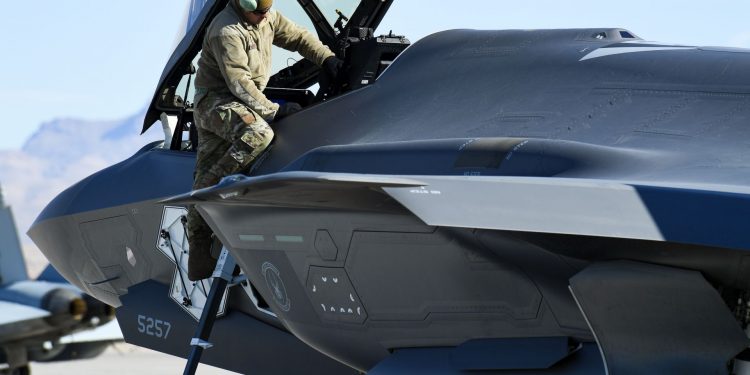HILL AIR FORCE BASE, Utah: As capable as the F-35A Lightning II has proven itself to be on the battlefield – seeking out and evading or killing high-end threats – it can be just as capable in reliability and quick combat ‘turns’ when maintainers leverage the synergy designed into the maintenance systems.
When you listen to Col. Michael Miles, 388th Maintenance Group commander, the future is bright for the F-35A and it rests in the trust and training of current and future maintainers, as well as “synergy-centered maintenance.”
For three years he’s been running maintenance operations for the Air Force’s first combat capable F-35A Lightning II wing through the successes (initial operational capability, successful combat deployments and the largest fifth generation aircraft elephant walk ever) and through the challenges (supply, canopies, fuel line and coating issues).
“The average Airmen, officer or enlisted, probably doesn’t know that we have more F-35s in the Air Force today than any other fighter except the F-16 (Fighting Falcon),” Miles said. “They’ll blink, and their next assignment will be at an F-35 base, if they’re not there already. We really need to educate them on the capabilities and the synergy this maintenance system provides. It’s like nothing else in the Air Force inventory.”
While there have been notable program-wide challenges with F-35A sustainment and the Autonomic Logistics Information System, improvements have been made with continuous system updates and more are in the works, Miles said. It’s not the individual programs, but the concept – synergy-centered maintenance – is the core of what makes fifth-generation sustainment unique, he said.
“To me, the most valuable part of the maintenance system is the prognostics health management capabilities,” Miles said. “The ability to look at what the jet is reporting on its health and make maintenance decisions early, before something breaks, is a huge leap in maintenance management from previous aircraft.”
Miles describes the PHM system like a patient going to a doctor for a regular exam. The patient may have high-blood pressure that bears monitoring. The doctor wants the patient to come back in a few days for a check-up. Medication may be required, but the initial reaction isn’t to put the patient on bed rest.
“First off, with PHM, you know exactly what the issue is. You don’t have to decipher fault isolation lists and manually dig through technical data like many fourth-generation platforms. The information is right there in the system,” Miles said. “You can track these issues and learn that not every issue is something that would cause you to ground a jet. That takes hands-on field experience – living it and learning it.”
If the issue is something that bears more than monitoring, then the system can provide the recommended fix in the associated electronic joint technical data, create a work order and even request the proper parts be sent to the unit.
Meanwhile, while each squadron is tracking the health of its fleet, engineers at the F-35 program level are constantly looking at the most commonly-reported issues, delivering solutions and adjusting the supply chain where needed. This is the synergy that is the key to continued progress in F-35A maintenance, and maintainers will learn to trust the system as the program continues to mature, Miles said.
That trust will continue to improve performance. Currently, the 388th Fighter Wing is generating a mission capable rate of more than 80%, which means that they can generate enough F-35A sorties to support the operational demands of the wing.
Because the 388th FW is meeting that “operational threshold,” the F-35 program as a whole could, in theory, shift logistics focus to other units who may not be meeting that threshold or who are just standing up.
The concept is referred to as performance-based logistics and is another part of synergy-centered maintenance. It means that instead of one unit being fully mission capable and another unit being a fraction of that, sustainment and supply chain can be adjusted to both meet operational demands, Miles said.
“That’s how performance-based logistics works, and it only works if everyone buys in. We need to curb the legacy tendency to strive for 100%. That stresses maintenance repair capability and stretches out the supply chain chasing after the unattainable. That is a legacy model,” Miles said. “Adjusting expectations to allow everyone across the force reach their operational threshold is giving a little to gain a lot. It’s the synergy we’re talking about, and we need to be comfortable with that.”
People are also a large part of the mission-capability equation said Miles. As new maintainers, and maintainers transitioning from legacy platforms, learn the most efficient ways to leverage the synergy designed into the F-35 maintenance concept, the platform’s reliability should only increase across the program, he said.










